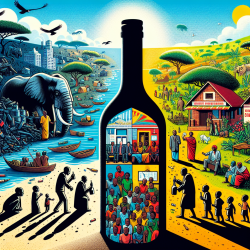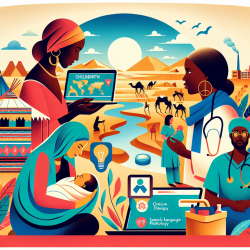Introduction
As practitioners in the field of speech-language pathology, understanding the broader context of societal issues can enhance our ability to support and advocate for the children we serve. One such pressing issue is the harmful use of alcohol in sub-Saharan Africa, as highlighted in the research article "Harmful Use of Alcohol: A Shadow over Sub-Saharan Africa in Need of Workable Solutions" by Ferreira-Borges et al. This blog post will explore how the findings from this research can inform our practice and encourage further investigation into the societal factors affecting children's development.
Understanding the Impact
The research highlights the growing burden of alcohol-related harm in sub-Saharan Africa, exacerbated by the expansion of the alcohol industry and insufficient policy responses. With a significant portion of the population under 14 years old, the potential for increased alcohol consumption among youth is a critical concern. This demographic shift underscores the need for effective interventions to mitigate the negative impacts on children's health and development.
Key Findings and Implications for Practice
Practitioners can draw several insights from the research:
- Recognize the Societal Context: Understanding the cultural and social factors contributing to alcohol consumption can help practitioners develop more culturally sensitive approaches when working with families and communities.
- Advocate for Policy Change: The research calls for strengthened alcohol policies, including regulation of availability and marketing. Practitioners can play a role in advocacy efforts by raising awareness and supporting initiatives aimed at policy reform.
- Focus on Prevention and Education: Integrating alcohol education into existing health and education programs can help prevent early initiation of alcohol use among children and adolescents.
Encouraging Further Research
While the research provides a comprehensive overview of the challenges and potential solutions, there is a need for further investigation into the specific impacts of alcohol consumption on children's development. Practitioners are encouraged to engage in research efforts that explore the intersection of alcohol use, education, and health outcomes in sub-Saharan Africa.
Conclusion
Addressing the harmful use of alcohol in sub-Saharan Africa requires a multifaceted approach involving policy change, education, and community engagement. As practitioners, we have the opportunity to contribute to these efforts by advocating for children and supporting research initiatives that aim to create healthier environments for future generations.
To read the original research paper, please follow this link: Harmful Use of Alcohol: A Shadow over Sub-Saharan Africa in Need of Workable Solutions.










